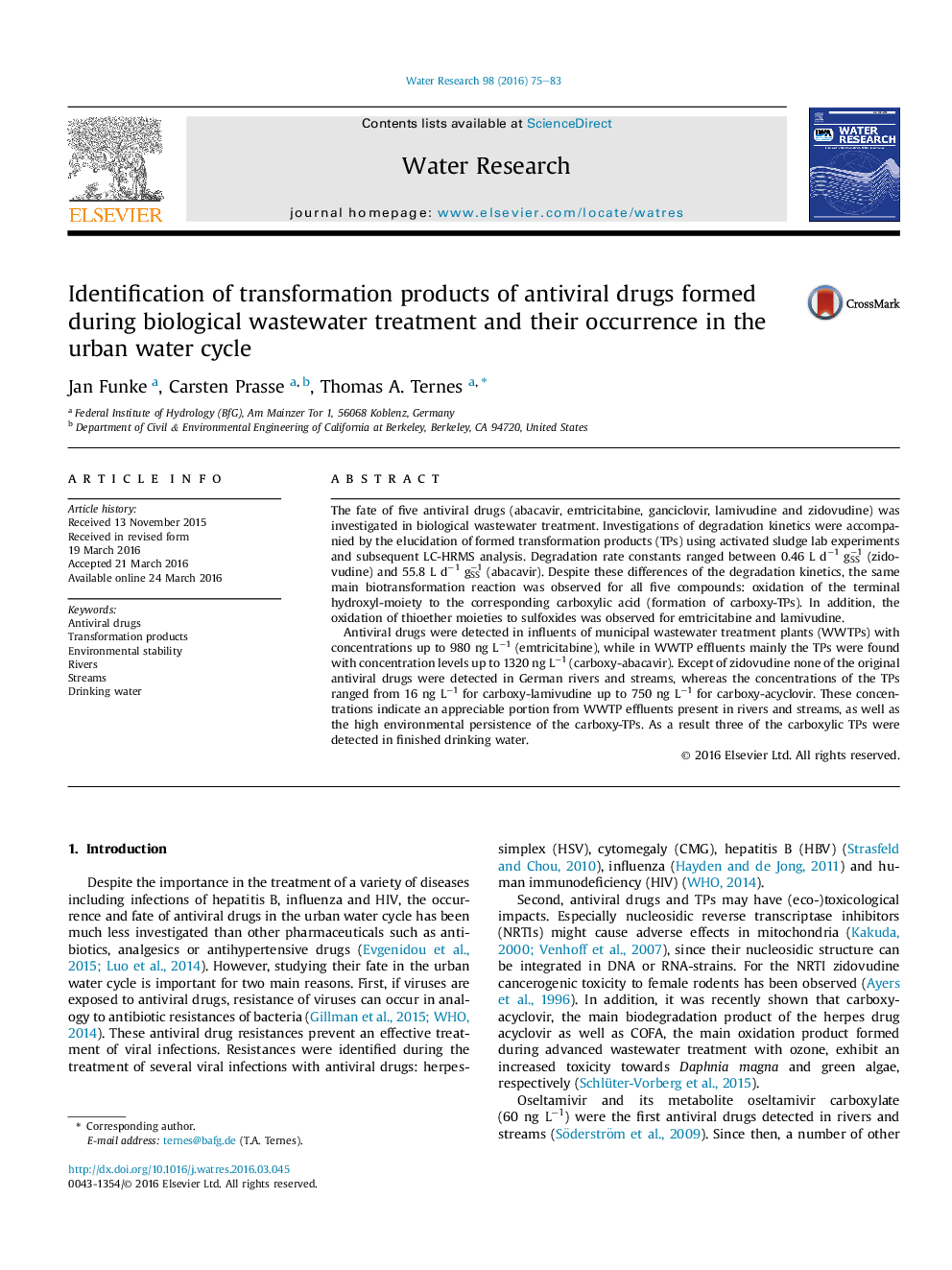| کد مقاله | کد نشریه | سال انتشار | مقاله انگلیسی | نسخه تمام متن |
|---|---|---|---|---|
| 4480972 | 1623070 | 2016 | 9 صفحه PDF | دانلود رایگان |
• New biological transformation products of antiviral drugs were identified to be formed in WWTPs.
• Carboxy-TPs were found in rivers, streams and drinking water.
• Transformation products can be removed by ozonation and partly by powdered activated carbon.
The fate of five antiviral drugs (abacavir, emtricitabine, ganciclovir, lamivudine and zidovudine) was investigated in biological wastewater treatment. Investigations of degradation kinetics were accompanied by the elucidation of formed transformation products (TPs) using activated sludge lab experiments and subsequent LC-HRMS analysis. Degradation rate constants ranged between 0.46 L d−1 gSS−1 (zidovudine) and 55.8 L d−1 gSS−1 (abacavir). Despite these differences of the degradation kinetics, the same main biotransformation reaction was observed for all five compounds: oxidation of the terminal hydroxyl-moiety to the corresponding carboxylic acid (formation of carboxy-TPs). In addition, the oxidation of thioether moieties to sulfoxides was observed for emtricitabine and lamivudine.Antiviral drugs were detected in influents of municipal wastewater treatment plants (WWTPs) with concentrations up to 980 ng L−1 (emtricitabine), while in WWTP effluents mainly the TPs were found with concentration levels up to 1320 ng L−1 (carboxy-abacavir). Except of zidovudine none of the original antiviral drugs were detected in German rivers and streams, whereas the concentrations of the TPs ranged from 16 ng L−1 for carboxy-lamivudine up to 750 ng L−1 for carboxy-acyclovir. These concentrations indicate an appreciable portion from WWTP effluents present in rivers and streams, as well as the high environmental persistence of the carboxy-TPs. As a result three of the carboxylic TPs were detected in finished drinking water.
Figure optionsDownload high-quality image (171 K)Download as PowerPoint slide
Journal: Water Research - Volume 98, 1 July 2016, Pages 75–83
